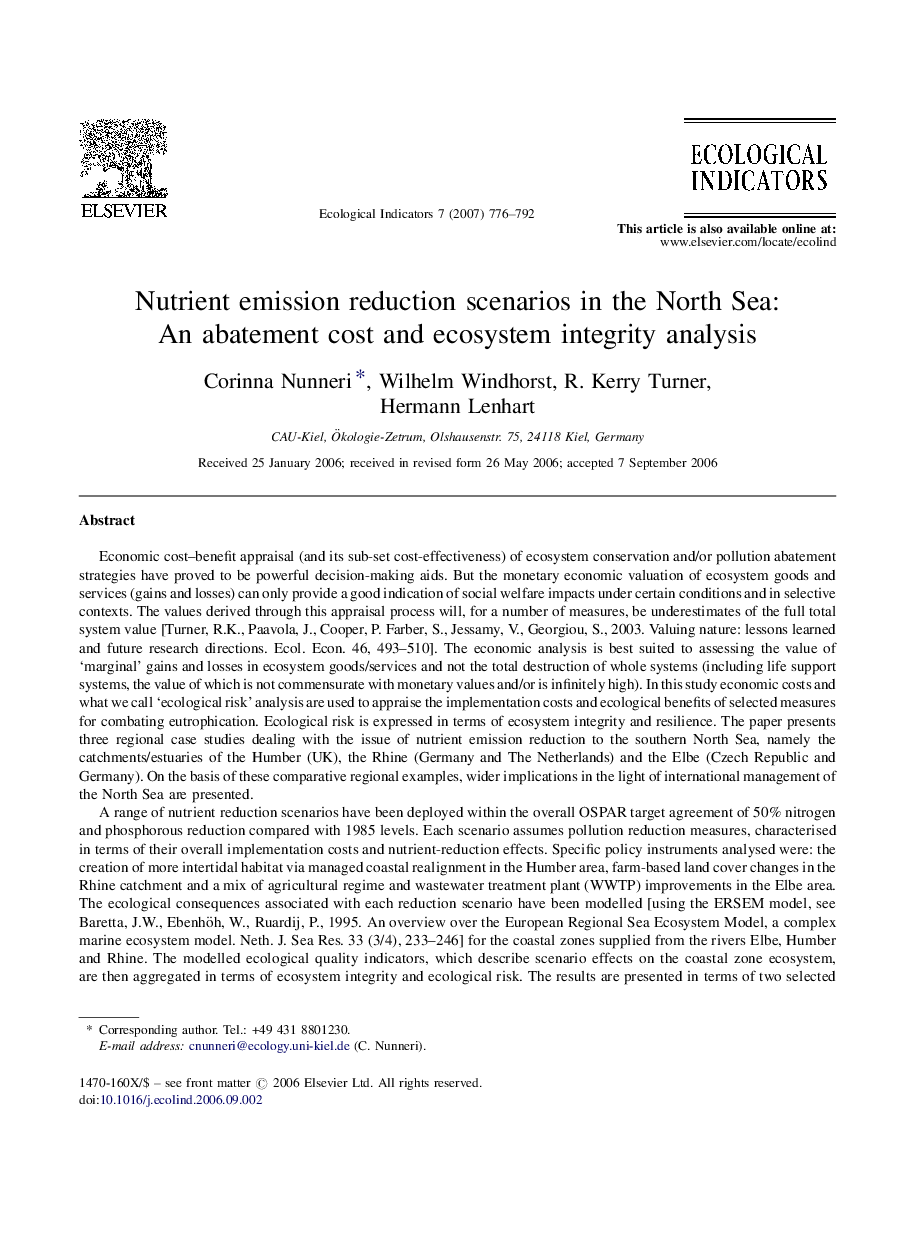| کد مقاله | کد نشریه | سال انتشار | مقاله انگلیسی | نسخه تمام متن |
|---|---|---|---|---|
| 4374655 | 1303186 | 2007 | 17 صفحه PDF | دانلود رایگان |

Economic cost–benefit appraisal (and its sub-set cost-effectiveness) of ecosystem conservation and/or pollution abatement strategies have proved to be powerful decision-making aids. But the monetary economic valuation of ecosystem goods and services (gains and losses) can only provide a good indication of social welfare impacts under certain conditions and in selective contexts. The values derived through this appraisal process will, for a number of measures, be underestimates of the full total system value [Turner, R.K., Paavola, J., Cooper, P. Farber, S., Jessamy, V., Georgiou, S., 2003. Valuing nature: lessons learned and future research directions. Ecol. Econ. 46, 493–510]. The economic analysis is best suited to assessing the value of ‘marginal’ gains and losses in ecosystem goods/services and not the total destruction of whole systems (including life support systems, the value of which is not commensurate with monetary values and/or is infinitely high). In this study economic costs and what we call ‘ecological risk’ analysis are used to appraise the implementation costs and ecological benefits of selected measures for combating eutrophication. Ecological risk is expressed in terms of ecosystem integrity and resilience. The paper presents three regional case studies dealing with the issue of nutrient emission reduction to the southern North Sea, namely the catchments/estuaries of the Humber (UK), the Rhine (Germany and The Netherlands) and the Elbe (Czech Republic and Germany). On the basis of these comparative regional examples, wider implications in the light of international management of the North Sea are presented.A range of nutrient reduction scenarios have been deployed within the overall OSPAR target agreement of 50% nitrogen and phosphorous reduction compared with 1985 levels. Each scenario assumes pollution reduction measures, characterised in terms of their overall implementation costs and nutrient-reduction effects. Specific policy instruments analysed were: the creation of more intertidal habitat via managed coastal realignment in the Humber area, farm-based land cover changes in the Rhine catchment and a mix of agricultural regime and wastewater treatment plant (WWTP) improvements in the Elbe area. The ecological consequences associated with each reduction scenario have been modelled [using the ERSEM model, see Baretta, J.W., Ebenhöh, W., Ruardij, P., 1995. An overview over the European Regional Sea Ecosystem Model, a complex marine ecosystem model. Neth. J. Sea Res. 33 (3/4), 233–246] for the coastal zones supplied from the rivers Elbe, Humber and Rhine. The modelled ecological quality indicators, which describe scenario effects on the coastal zone ecosystem, are then aggregated in terms of ecosystem integrity and ecological risk. The results are presented in terms of two selected key-indicators: implementation costs of the abatement measures and changes in ecological risk status, across the different catchments and assuming different scenarios. They thus provide a possible basis for international agreement negotiations at the North Sea scale.
Journal: Ecological Indicators - Volume 7, Issue 4, November 2007, Pages 776–792